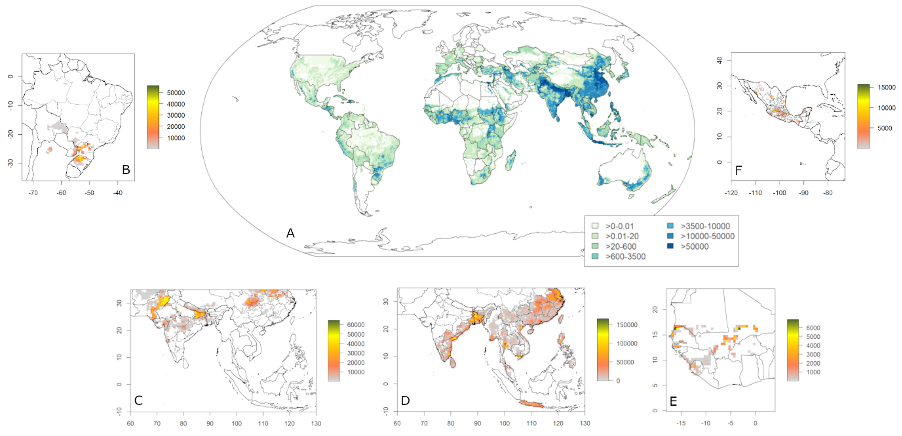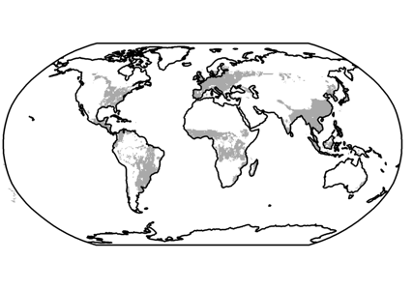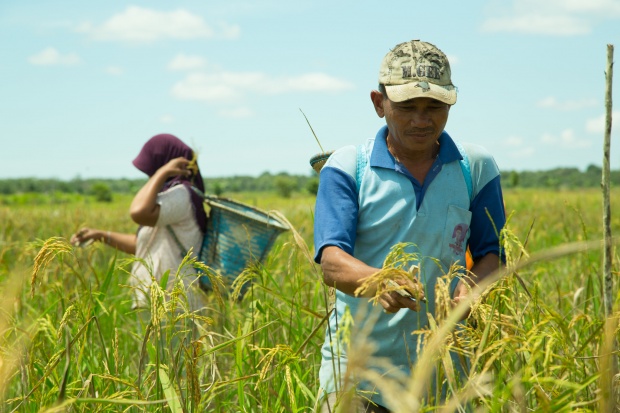For the first time, the global area of different multiple cropping systems is quantified. This could be a game-changer for farmers and not only farmers. The key: Crop production can be increased without increasing the surface of cultivated land. Feeding the world’s growing population depends on such systems but there is a caveat. Here is why.

Global population and food demand are expected to increase considerably in the future. Solutions to feeding and nourishing the world’s growing population include increasing access to food, reducing food waste, and producing more food while minimizing the negative impacts of food production on the environment.
A way to grow more food on the same piece of land is for farmers to practice multiple cropping, defined as growing multiple crops sequentially, within a year.
Multiple cropping can increase production and income and has additional benefits—increased crop diversity, improved functioning of agricultural systems, spare land for biodiversity or other uses, and reduced use of inorganic fertilizer and pesticides. However, it can also have disadvantages such as increased risk of crop failure and risk of environmental degradation.
This strategy is not new. Many farmers already practice it, particularly in tropical and sub-tropical regions. However, many more farmers could intensify and diversify their farming practices by using it to increase agricultural production. Until now, scientists have not been able to understand where different types of multiple cropping are practiced or quantify the land area where it is in use. Thus, they have not been able to properly account for it when modeling global food production, land use change, and effects of multiple cropping on a range of factors including ground coverage and water fluxes.
Related Articles: Women In Agriculture Initiative | Crop loss Assessment Monitor | Farmers and Climate Profit From Precise Fertilizer Management
Better accounting of multiple cropping systems globally can help scientists understand the extent to which the suggested intensification on current cropland for increasing crop production can be sustainable.
To address this lack of data, a new study led by the Commonwealth Scientific and Industrial Research Organisation (CSIRO) mapped multiple cropping systems globally and estimated the multiple cropping area for the time period 1998-2002. The study also estimated the potential to increase multiple cropping.
Novel findings: New more comprehensive estimates are far less optimistic than in the past
The study found that the majority of multiple cropping areas are located in East Asia and South Asia, and in low to lower-middle-income countries. Multiple cropping systems in South Asia are mostly based on rice, with other crops grown after the rice has been harvested.
Multiple cropping systems in Africa are based on maize, wheat, millet or sorghum. They are in use on 40% of global irrigated cropland and only 5% of global rainfed cropland. So here there is ample room for expansion.

Increasing multiple cropping is an important strategy for increasing the harvested area and crop production without expanding physical cropland.
The scientists’ approach found that a maximum of 395 million hectares (~40 %) of the global single crop area in 2000 was potentially available for this type of intensification. The additional total crop area for intensification is largest in South America and lowest in Oceania.
This new estimate is considerably less than previous estimates by other studies. Yet its findings are highly reliable.
This is the first time that multiple cropping systems have been mapped on a global scale, with the crop-specific and area representation that is needed for global assessments of land use and food production. This study goes beyond previous work in that it describes multiple cropping systems in terms of the cropping sequence, growing season, and physical area of each system and not just the average cropping intensity.
Implications for food security and the environment
The study found that increasing multiple cropping in suitable areas could increase global harvested areas of currently 1.29 billion hectares by 87-395 million hectares. Many low- and middle-income countries in Africa, South America, and Asia have the potential for increasing multiple cropping which could support food supply and food security.

“While this means that farmers could grow a lot more food and more regions can be food secure by practicing multiple cropping, our estimate of maximum 30% increase in global production is much lower than the previous estimates,” said Stefan Siebert, Professor of Agronomy at the University of Göttingen. “This means that while multiple cropping is an important strategy to increase the production of food and food security, it might contribute less to future global food production than we previously thought. We certainly need to consider other options to sustainably feed the world’s population.”
Some forms of multiple cropping can be beneficial for the environment, but others can be harmful. If multiple cropping is able to increase production on existing land, then the land can be spared for biodiversity elsewhere. This is of great benefit to the environment.
However, the economic benefit from increased production from multiple cropping can also lead farmers to expand their current cropland with negative outcomes for biodiversity. Furthermore, more intense farming can use additional resources that can have negative impacts on the environment.
The environmental consequences of introducing a second crop on currently single cropping land depend on the type of crop, management, and the local context.
Thus, multiple cropping is a useful strategy to help to feed the world’s growing global population more sustainably. However, it cannot be adopted blindly. Careful consideration of the benefits and disadvantages of multiple cropping at local scales is needed prior to adoption.
Editor’s Note: The opinions expressed here by Impakter.com contributors are their own, not those of Impakter.com. — Featured Photo Credit: M. Edliadi (CIFOR)










